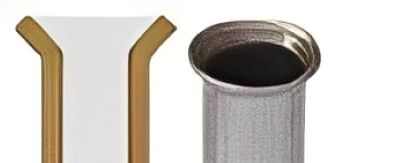Flaring is an essential process in metal tubing that involves expanding the end of a tube to create a secure, leak-proof connection. It is widely used in various industries such as automotive, plumbing, and HVAC systems, where reliable fluid or gas transport is critical.
Among the different types of flares, single and double flares are the most common. While both serve similar purposes, they have key differences in terms of strength, durability, and application. This article will explore these differences in detail and provide guidance on when to use each type.
What is a Single Flare?
A single flare is a type of flaring where the end of a metal tube is expanded outward to form a cone-shaped connection. This flare is typically created at a 45-degree angle and is designed to fit securely with a corresponding fitting.
How Single Flares Are Created
Single flares are formed using a flaring tool, which presses the end of the tube into a flared shape. The process involves the following steps:
1. Cutting the tubing to the required length.
2. Deburring the edges to ensure a smooth surface.
3. Placing the tubing in a flaring tool.
4. Using the tool to apply pressure and create the flare.
Common Applications and Industries
Single flares are commonly used in:
➡️ Low-pressure fuel and brake lines in automotive applications.
➡️ HVAC systems for refrigerant transport.
➡️ Plumbing systems for water and gas connections.
Advantages of Using a Single Flare
➡️ Simple and quick to create.
➡️ Requires fewer tools compared to a double flare.
➡️ Works well for low-pressure applications.
Potential Drawbacks and Limitations
➡️ Less durable compared to double flares.
➡️ More prone to cracking or deformation under high pressure.
➡️ Not suitable for applications requiring extreme reliability.
What is a Double Flare?
A double flare is a reinforced type of flare where the tube end is folded back on itself before being flared. This results in a stronger and more durable connection compared to a single flare.
How Double Flares Are Formed
Double flares are created using a special flaring tool that folds the tubing end before applying pressure to create the final flare. The process involves:
1. Cutting and deburring the tubing.
2. Using a flaring die to fold the tubing back on itself.
3. Applying pressure to form the double flare.
Common Applications and Industries
Double flares are widely used in:
➡️ High-pressure automotive brake and fuel lines.
➡️ Hydraulic systems.
➡️ HVAC and refrigeration applications where secure connections are needed.
Benefits of Using a Double Flare
➡️ Stronger and more resistant to cracking.
➡️ Provides a more secure, leak-proof connection.
➡️ Meets industry standards for high-pressure applications.
Challenges and Disadvantages of Double Flare
➡️ More complex and time-consuming to create.
➡️ Requires specialized tools.
➡️ Slightly higher material and labor costs.
Key Differences Between Single and Double Flare
Durability and Strength
➡️ Double flares are significantly stronger due to the additional layer of metal reinforcement.
➡️ Single flares are more prone to failure under high pressure.
Application Suitability
➡️ Single flares are best for low-pressure applications such as plumbing and HVAC.
➡️ Double flares are necessary for high-pressure applications like automotive brake lines.
Installation Process
➡️ Single flares are simpler and faster to create.
➡️ Double flares require additional steps and specialized tools.
Cost Considerations
➡️ Single flares are more cost-effective due to reduced material and labor.
➡️ Double flares may have higher costs but offer superior reliability.
Looking for Hydraulic Adapter Fittings ⬇️⬇️⬇️
When to Choose Single vs. Double Flare
Factors to Consider
➡️ Required pressure resistance.
➡️ Industry standards and safety regulations.
➡️ Availability of tools and expertise.
Real-World Scenarios
➡️ Automotive brake lines: Always use double flares for safety and durability.
➡️ Plumbing and HVAC systems: Single flares may suffice for low-pressure connections.
➡️ Hydraulic systems: Double flares provide additional security.
Industry Standards and Regulations
➡️ Automotive standards: Double flares are often required by law.
➡️ Plumbing and HVAC codes: May allow single flares for specific applications.
Step-by-Step Guide: Creating Single and Double Flares
Tools Needed for Flaring
➡️ Tubing cutter
➡️ Deburring tool
➡️ Flaring tool kit
➡️ Clamp or vice
Step-by-Step Process for Creating a Single Flare
1. Cut and deburr the tubing.
2. Insert the tubing into the flaring tool.
3. Apply pressure using the flaring cone to form the flare.
4. Inspect for any cracks or imperfections.
Step-by-Step Process for Making a Double Flare
1. Cut and deburr the tubing.
2. Insert the tubing into the flaring tool with the double flare die.
3. Fold the tubing end back on itself.
4. Use the flaring cone to create the final shape.
5. Inspect for cracks or weak points.
Common Mistakes to Avoid
➡️ Skipping the deburring step, which can cause leaks.
➡️ Using the wrong flare angle for fittings.
➡️ Applying too much or too little pressure during flaring.
Conclusion
Both single and double flares serve essential roles in metal tubing connections. Single flares are ideal for low-pressure applications where ease of installation and cost-effectiveness are key. Double flares, on the other hand, provide superior strength and durability, making them necessary for high-pressure environments like automotive brake lines and hydraulic systems.
When choosing between the two, consider factors such as pressure requirements, industry regulations, and available tools. By understanding the differences and following the proper flaring techniques, you can ensure secure and reliable tubing connections for any project.
Post time: Mar-28-2025



